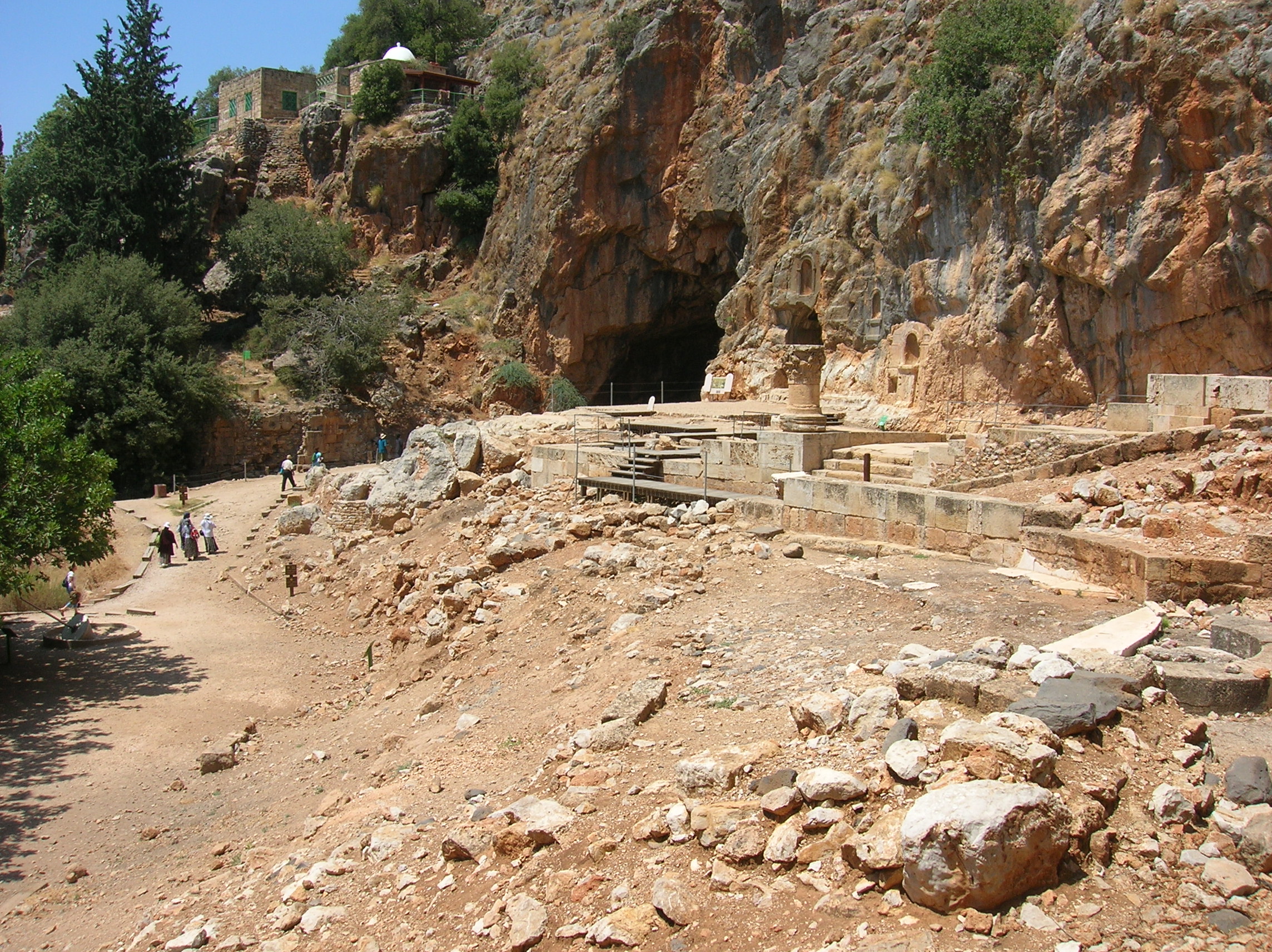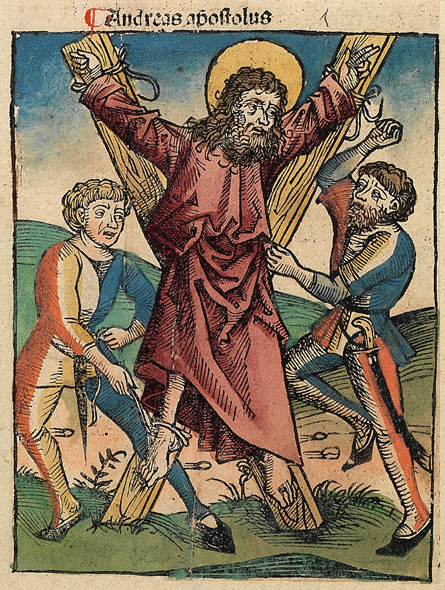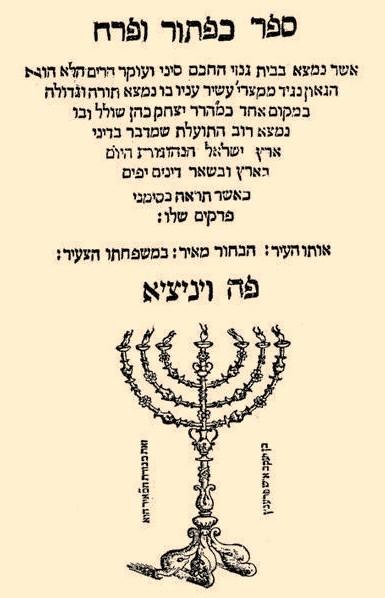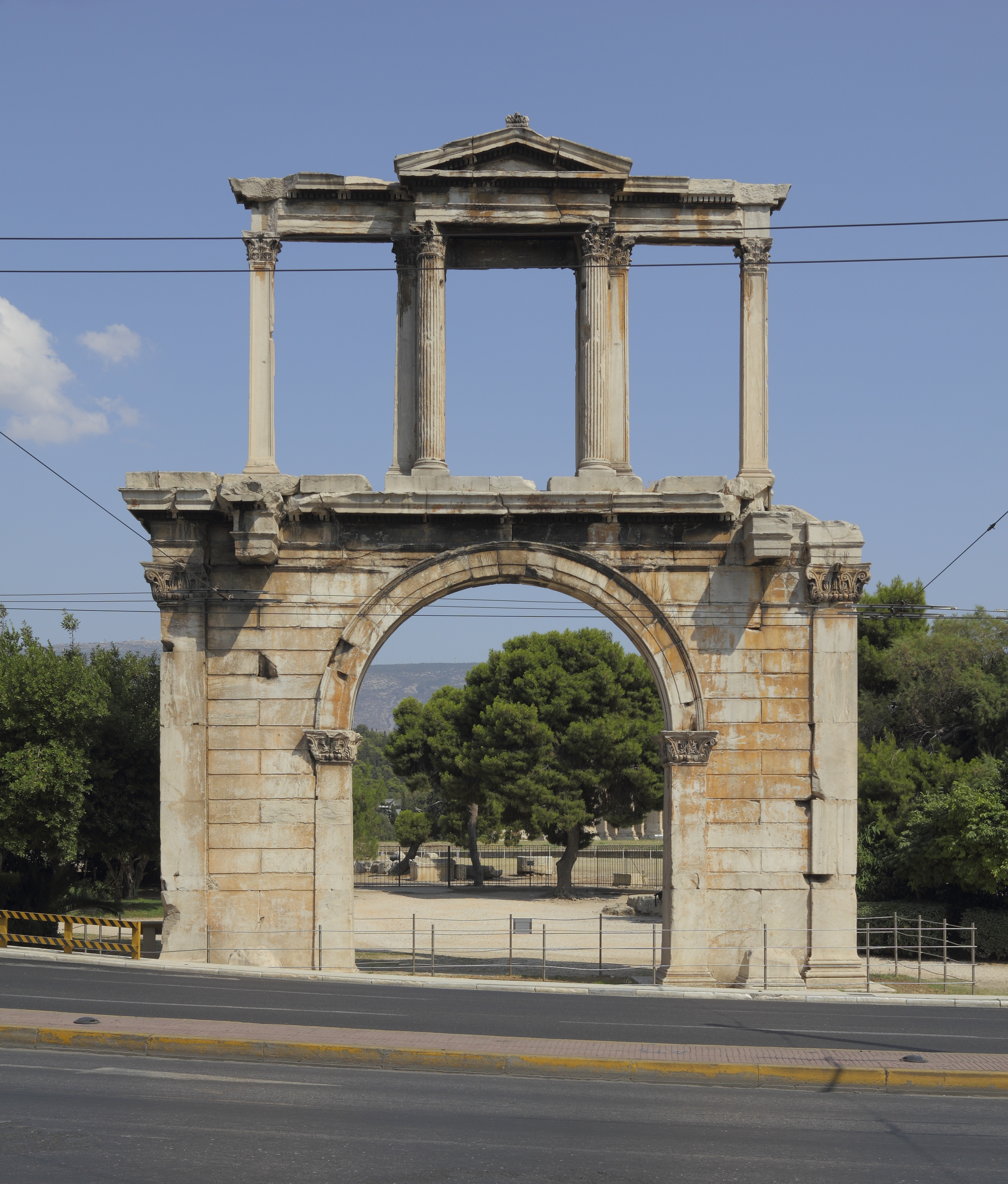|
Bethsaida (other)
Bethsaida ( ; from ; from Aramaic and , from the Hebrew root ; ), also known as Julias or Julia (), is a place mentioned in the New Testament. Julias lay in an administrative district known as Gaulonitis. Historians have suggested that the name is also referenced in rabbinic literature under the epithet (). History New Testament According to , Bethsaida was the hometown of the apostles Peter, Andrew, and Philip. In the Gospel of Mark (), Jesus reportedly restored a blind man's sight at a place just outside the ancient village of Bethsaida. In , Jesus miraculously feeds five thousand near Bethsaida. Pliny the Elder, in his '' Natural History'', places Bethsaida on the eastern side of the Sea of Galilee. The historian Josephus says that the town of Bethsaida (at that time called Julia), was situated 120 stadia from the lake Semechonitis, not far from the Jordan River as it passes into the middle of the Sea of Galilee. '' De Situ Terrae Sanctae'', a 6th-century account written ... [...More Info...] [...Related Items...] OR: [Wikipedia] [Google] [Baidu] |
Golan Heights
The Golan Heights ( ar, هَضْبَةُ الْجَوْلَانِ, Haḍbatu l-Jawlān or ; he, רמת הגולן, ), or simply the Golan, is a region in the Levant spanning about . The region defined as the Golan Heights differs between disciplines: as a geological and biogeographical region, the term refers to a basaltic plateau bordered by the Yarmouk River in the south, the Sea of Galilee and Hula Valley in the west, the Anti-Lebanon with Mount Hermon in the north and Wadi Raqqad in the east. As a geopolitical region, it refers to the border region captured from Syria by Israel during the Six-Day War of 1967; the territory has been occupied by the latter since then and was subject to a de facto Israeli annexation in 1981. This region includes the western two-thirds of the geological Golan Heights and the Israeli-occupied part of Mount Hermon. The earliest evidence of human habitation on the Golan dates to the Upper Paleolithic period. According to the Bible ... [...More Info...] [...Related Items...] OR: [Wikipedia] [Google] [Baidu] |
Hiriq
Hiriq ( he, חִירִיק ' ) is a Hebrew niqqud vowel sign represented by a single dot underneath the letter. In Modern Hebrew, it indicates the phoneme which is similar to the "ee" sound in the English word ''deep'' and is transliterated with "i". In Yiddish, it indicates the phoneme which is the same as the "i" sound in the English word ''skip'' and is transliterated with "i". Spelling When writing with niqqud, the letter '' yud'' is often written after the letter that carries the Hiriq sign. This is called ( he, חִירִיק מָלֵא ), meaning "full" (or "plene") hiriq. In writing without niqqud, the letter yud is added more often as a mater lectionis, than in writing with niqqud, The main exception is the i vowel in a syllable that ends with shva naḥ. For example the words סִדְרָה (series) and סִדְּרָה (she organized) are pronounced identically in modern Hebrew, but in spelling without niqqud סִדְרָה is written סדרה be ... [...More Info...] [...Related Items...] OR: [Wikipedia] [Google] [Baidu] |
Andrew The Apostle
Andrew the Apostle ( grc-koi, Ἀνδρέᾱς, Andréās ; la, Andrēās ; , syc, ܐܰܢܕ݁ܪܶܐܘܳܣ, ʾAnd’reʾwās), also called Saint Andrew, was an apostle of Jesus according to the New Testament. He is the brother of Simon Peter and is a son of Jonah. He is referred to in the Orthodox tradition as the First-Called ( grc-koi, Πρωτόκλητος, Prōtoklētos, label=none). According to Orthodox tradition, the apostolic successor to Andrew is the Patriarch of Constantinople. Life The name "Andrew" (meaning ''manly, brave'', from grc-gre, ἀνδρεία, andreía, manhood, valour), like other Greek names, appears to have been common among the Jews and other Hellenized people since the second or third century B.C. MacRory, Joseph. "St. Andrew." The Catholic Encyclopedia Vol. 1. ... [...More Info...] [...Related Items...] OR: [Wikipedia] [Google] [Baidu] |
Saint Peter
) (Simeon, Simon) , birth_date = , birth_place = Bethsaida, Gaulanitis, Syria, Roman Empire , death_date = Between AD 64–68 , death_place = probably Vatican Hill, Rome, Italia, Roman Empire , parents = John (or Jonah; Jona) , occupation = Fisherman, clergyman , feast_day = , venerated = All Christian denominations that venerate saints and in Islam , canonized_date = Pre- Congregation , attributes = Keys of Heaven, Red Martyr, pallium, papal vestments, rooster, man crucified upside down, vested as an Apostle, holding a book or scroll, Cross of Saint Peter , patronage = Patronage list , shrine = St. Peter's Basilica Saint Peter; he, שמעון בר יונה, Šimʿōn bar Yōnāh; ar, سِمعَان بُطرُس, translit=Simʿa̅n Buṭrus; grc-gre, Πέτρος, Petros; cop, Ⲡⲉⲧⲣⲟⲥ, Petros; lat, Petrus; ar, شمعون الصفـا, Sham'un al-Safa, Simon the Pure.; tr, Aziz Petrus (died between AD 64 and 68), also known as Peter ... [...More Info...] [...Related Items...] OR: [Wikipedia] [Google] [Baidu] |
Ishtori Haparchi
Ishtori Haparchi (1280-1355), also Estori Haparchi and Ashtori ha-Parhi ( he, אשתורי הפרחי) is the pen name of the 14th-century Jewish physician, geographer, and traveller, Isaac HaKohen Ben Moses.''Encyclopedia Judaica'' Keter, Jerusalem, 1972, "Estori Ha-Parchi," vol. 6, p.918. Yeshurun vol. 21 p. 855 Pen name HaParchi is commonly known by the title ''Kaftor va-Ferach'' taken from the name of his work, the expression being additionally a pun on his surname. ''Ish Tori'', as he refers to himself in his book, may mean "Man of Tours", the capital of the medieval French county of Touraine,Ronald L. Eisenberg Essential Figures in Jewish Scholarship p. 72, ''Eshtori (Ishtori) ha-Parchi (France, 1280-1355)''. Accessed 8 October 2018. though according to other opinions "Ishtori" was simply his personal name, a single word. Biography Ishtori Haparchi was born in Provence in 1280. Haparchi was descended from a line of sages and rabbis of fame. His father was Rabbi Moshe HaPar ... [...More Info...] [...Related Items...] OR: [Wikipedia] [Google] [Baidu] |
Sea Of Galilee
The Sea of Galilee ( he, יָם כִּנֶּרֶת, Judeo-Aramaic: יַמּא דטבריא, גִּנֵּיסַר, ar, بحيرة طبريا), also called Lake Tiberias, Kinneret or Kinnereth, is a freshwater lake in Israel. It is the lowest freshwater lake on Earth and the second-lowest lake in the world (after the Dead Sea, a saltwater lake), at levels between and below sea level. It is approximately in circumference, about long, and wide. Its area is at its fullest, and its maximum depth is approximately .Data Summary: Lake Kinneret (Sea of Galilee) The lake is fed partly by underground springs, but its main source is the |
Lake Hulah
The Hula Valley ( he, עמק החולה, translit. ''Emek Ha-Ḥula''; also transliterated as Huleh Valley, ar, سهل الحولة) is an agricultural region in northern Israel with abundant fresh water, which used to be Lake Hula, prior to its draining. It is a major stopover for birds migrating along the Syrian-African Rift Valley between Africa, Europe, and Asia. Lake Hula and the marshland surrounding it were a breeding ground for mosquitoes carrying malaria, and so were drained in the 1950s. A small section of the valley was later re-flooded in an attempt to revive a nearly extinct ecosystem. An estimated 500 million migrating birds now pass through the Hula Valley every year. Etymology Lake Hula was historically referred to by different names. The 14th century BCE Egyptians called the lake ''Samchuna'', while the Hebrew Bible records it as ''Merom''. In the 1st century CE, the Jewish-Roman historian Flavius Josephus termed it ''Semechonitis'' ( el, Σημεχωνίτ� ... [...More Info...] [...Related Items...] OR: [Wikipedia] [Google] [Baidu] |
Gush Halav
Jish ( ar, الجش; he, גִ'שׁ, גּוּשׁ חָלָב, Jish, Gush Halav) is a local council in Upper Galilee, located on the northeastern slopes of Mount Meron, north of Safed, in Israel's Northern District. In it had a population of , which is predominantly Maronite Catholic and Melkite Greek Catholic Christians (63%), with a Sunni Muslim Arab minority (about 35.7%).YNE''On the slopes of a hill, at an elevation of 860 meters surrounded by cherry orchards, pears and apples, built houses, especially church building looks from afar. Number of inhabitants 3,000 divided by 55% Maronite Christian, 30% Greek Catholics and the rest are Muslims.'' The city has been inhabited since Canaanite religion, Canaanite times; later archaeological finds in Jish include two historical synagogues, a unique mausoleum and burial caves from the classic era. According to the Roman-Jewish historian Josephus, Gischala was the last city in the Galilee to fall to the Romans during the First Jew ... [...More Info...] [...Related Items...] OR: [Wikipedia] [Google] [Baidu] |
Silk
Silk is a natural protein fiber, some forms of which can be woven into textiles. The protein fiber of silk is composed mainly of fibroin and is produced by certain insect larvae to form cocoons. The best-known silk is obtained from the cocoons of the larvae of the mulberry silkworm '' Bombyx mori'' reared in captivity ( sericulture). The shimmering appearance of silk is due to the triangular prism-like structure of the silk fibre, which allows silk cloth to refract incoming light at different angles, thus producing different colors. Silk is produced by several insects; but, generally, only the silk of moth caterpillars has been used for textile manufacturing. There has been some research into other types of silk, which differ at the molecular level. Silk is mainly produced by the larvae of insects undergoing complete metamorphosis, but some insects, such as webspinners and raspy crickets, produce silk throughout their lives. Silk production also occurs in hymenopte ... [...More Info...] [...Related Items...] OR: [Wikipedia] [Google] [Baidu] |
Common Pheasant
The common pheasant (''Phasianus colchicus'') is a bird in the pheasant family (Phasianidae). The genus name comes from Latin ''phasianus'', "pheasant". The species name ''colchicus'' is Latin for "of Colchis" (modern day Georgia), a country on the Black Sea where pheasants became known to Europeans. Although ''Phasianus'' was previously thought to be closely related to the genus ''Gallus'', the genus of junglefowl and domesticated chickens, recent studies show that they are in different subfamilies, having diverged over 20 million years ago. It is native to Asia and parts of Europe like the northern foothills of the Caucasus and the Balkans. It has been widely introduced elsewhere as a game bird. In parts of its range, namely in places where none of its relatives occur such as in Europe, where it is naturalised, it is simply known as the "pheasant". Ring-necked pheasant is both the name used for the species as a whole in North America and also the collective name for a number ... [...More Info...] [...Related Items...] OR: [Wikipedia] [Google] [Baidu] |
Black Pepper
Black pepper (''Piper nigrum'') is a flowering vine in the family Piperaceae, cultivated for its fruit, known as a peppercorn, which is usually dried and used as a spice and seasoning. The fruit is a drupe (stonefruit) which is about in diameter (fresh and fully mature), dark red, and contains a stone which encloses a single pepper seed. Peppercorns and the ground pepper derived from them may be described simply as ''pepper'', or more precisely as ''black pepper'' (cooked and dried unripe fruit), ''green pepper'' (dried unripe fruit), or ''white pepper'' (ripe fruit seeds). Black pepper is native to the Malabar Coast of India, and the Malabar pepper is extensively cultivated there and in other tropical regions. Ground, dried, and cooked peppercorns have been used since antiquity, both for flavour and as a traditional medicine. Black pepper is the world's most traded spice, and is one of the most common spices added to cuisines around the world. Its spiciness is due to ... [...More Info...] [...Related Items...] OR: [Wikipedia] [Google] [Baidu] |
Hadrian
Hadrian (; la, Caesar Trâiānus Hadriānus ; 24 January 76 – 10 July 138) was Roman emperor from 117 to 138. He was born in Italica (close to modern Santiponce in Spain), a Roman '' municipium'' founded by Italic settlers in Hispania Baetica and he came from a branch of the gens Aelia that originated in the Picenean town of Hadria, the ''Aeli Hadriani''. His father was of senatorial rank and was a first cousin of Emperor Trajan. Hadrian married Trajan's grand-niece Vibia Sabina early in his career before Trajan became emperor and possibly at the behest of Trajan's wife Pompeia Plotina. Plotina and Trajan's close friend and adviser Lucius Licinius Sura were well disposed towards Hadrian. When Trajan died, his widow claimed that he had nominated Hadrian as emperor immediately before his death. Rome's military and Senate approved Hadrian's succession, but four leading senators were unlawfully put to death soon after. They had opposed Hadrian or seemed to threat ... [...More Info...] [...Related Items...] OR: [Wikipedia] [Google] [Baidu] |
.jpg)





.jpg)

